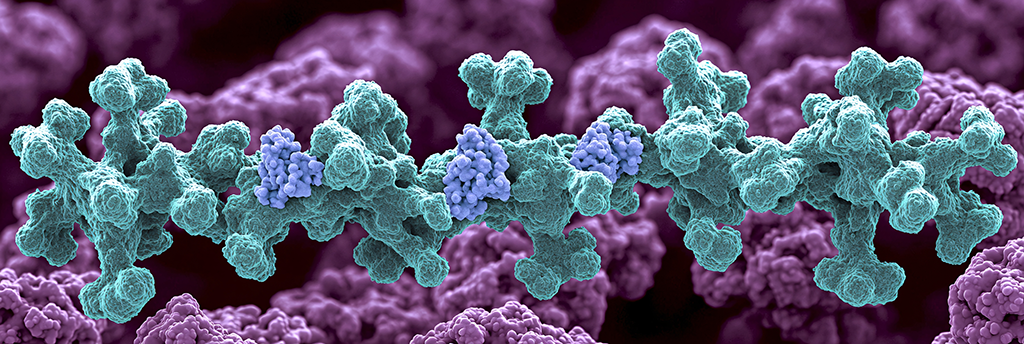
The landscape of longevity medicine is undergoing a profound change in 2025. As practitioners increasingly recognize that their patients aren’t bouncing back like they used to—from exercise intolerance to rising inflammatory markers with no obvious trigger—a new shift is emerging that addresses accelerated aging at its biological roots.
For decades, functional medicine providers have successfully managed chronic conditions with predictable protocols. Yet in clinical practice, the reality has fundamentally shifted. As forward-thinking providers across the field are discovering, “We’re seeing accelerated aging show up in younger and younger people. Not just in those with comorbidities. Not just in the elderly.”
But the issue goes deeper than typical aging patterns. Clinical observations reveal a crucial insight that challenges conventional thinking:
“We’re talking about fit 30- and 40-year-olds with clean labs and healthy habits… who now can’t tolerate exercise, struggle with brain fog, or suddenly show rising inflammatory markers with no obvious trigger. And here’s the kicker: many of them never had ‘severe COVID.’ Some were asymptomatic. Others only got vaccinated. Yet their biology is acting older, more inflamed, more dysregulated.”
Leading practitioners are now recognizing that what we’re dealing with isn’t rare long COVID—it’s widespread biological disruption from spike protein exposure, through infection, vaccination, or both. This understanding represents a fundamental shift in how we approach accelerated aging and patient resilience.

Detailed molecular structure of coronavirus spike protein with receptor binding domains in focus
Providers across specialties are reporting consistent findings that demand attention:
What makes this biological disruption unique is its persistence through an unexpected pathway:
The spike protein component isn’t just about acute infection—it’s about chronic persistence. New studies suggest that SARS-CoV-2 can behave like a bacteriophage:
Research shows that this mechanism creates a reservoir effect that explains why patients continue experiencing symptoms long after apparent recovery.
Here’s where the innovation in understanding truly shines. While pre-2020 inflammatory markers had stable ranges, clinical observations demonstrate a fundamental shift in what’s “normal.”
As experienced practitioners are noting: “How often did you see an elevated D-dimer before 2020? For those of you who have been tracking TGF-β1, take a look at what the ‘normal range’ was pre-2020. Now take a look at what’s being reported as normal today.”
This baseline shift means:
The infected gut bacteria produce peptides that work through multiple mechanisms:
SARS-CoV-2 RNA has been detected in fecal samples of patients who test negative on nasal swabs—this isn’t rare, it’s just underrecognized.
The pattern isn’t just theoretically concerning—it’s consistently observable. Across functional and longevity practices, providers report:
These observations span every system: gut health, brain function, mitochondrial efficiency, immune regulation, and cardiovascular resilience.
Perhaps most importantly, this biological disruption directly accelerates aging across multiple pathways, now recognized as a primary driver of premature aging in the post-2020 era. Unlike traditional aging patterns that develop gradually, this spike protein-driven aging creates sudden shifts in biological function, requiring entirely new approaches to longevity medicine.
Forward-thinking practitioners are developing strategic frameworks for addressing this new landscape:
For patients with persistent symptoms,
comprehensive spike protein protocols addressing gut reservoirs.
For those with new inflammatory baselines,
recalibrated reference ranges, and treatment thresholds.
For accelerated aging patterns,
multi-system support targeting mitochondria, gut, and immune function.
“If the patient’s internal environment has changed, your protocols have to change with it,” leading clinicians emphasize. “We can’t use pre-2020 approaches for post-2020 biology.”
When combining targeted interventions, practitioners report improved outcomes addressing:
This comprehensive approach makes sense mechanistically:
Recognition:
Look for the pattern of sudden changes in previously stable patients—exercise intolerance, new sensitivities, rising inflammatory markers
Testing Considerations:
Protocol Duration:
Most practitioners recommend comprehensive, multi-month protocols with regular reassessment, as quick fixes rarely address the underlying persistent mechanisms.
This new understanding represents more than an incremental adjustment—it’s a fundamental shift in how we approach accelerated aging and patient resilience. By recognizing the persistent biological disruption from spike protein exposure and addressing it at the source, practitioners can achieve outcomes that standard approaches miss entirely.
As our understanding of post-COVID physiology continues to evolve, protocols that address the unique mechanisms of spike protein persistence—particularly in the gut microbiome—will likely become the new standard of care. For practitioners committed to optimal patient outcomes, recognizing and treating this “rewiring of human biology” offers a powerful tool for restoring true health and resilience.
The evidence is clear: when it comes to longevity medicine in the post-2020 era, the future lies not in treating symptoms or adjusting to new baselines, but in understanding and addressing the root biological disruptions that have fundamentally changed how our patients age. For those seeking to lead the future of personalized care, this new paradigm offers both challenge and opportunity.
If your patients aren’t bouncing back like they used to…
If “resilience” is the missing piece in your protocol…
And if you want to lead the future of personalized care—
👉 Join us at the Clinical Longevity Summit.
Let’s face this new era of medicine together.
References:
Spike Protein Persistence & Bacteriophage-Like Behavior
Emerging evidence suggests SARS-CoV-2 can infect human gut bacteria and act like a bacteriophage, potentially creating a persistent reservoir of viral material in the microbiome.Vaccines. 2022;10(5):708. https://doi.org/10.3390/vaccines10050708
Toxin-Like Peptides from Infected Microbiota
Infected gut bacteria may produce peptides that mimic neurotoxins and interfere with neurological and immune signaling, contributing to post-COVID symptoms. Biomedicines. 2023;11(1):87. https://doi.org/10.3390/biomedicines11010087
Evidence of Viral RNA Persistence in Stool
SARS-CoV-2 RNA has been detected in fecal samples even when nasal swabs are negative, supporting the idea of hidden reservoirs and extended viral shedding. Medicina. 2021;57(3):290. https://doi.org/10.3390/medicina57030290
Image Source: AdobeStock by Ronnayut
